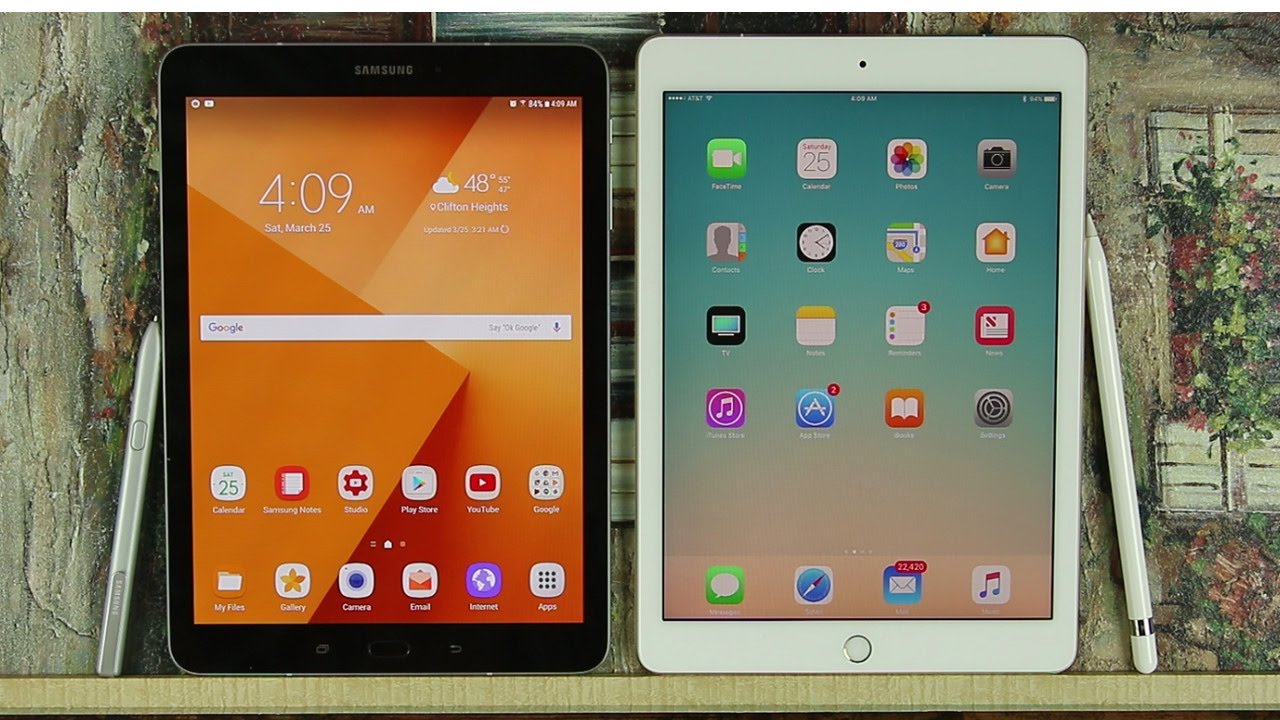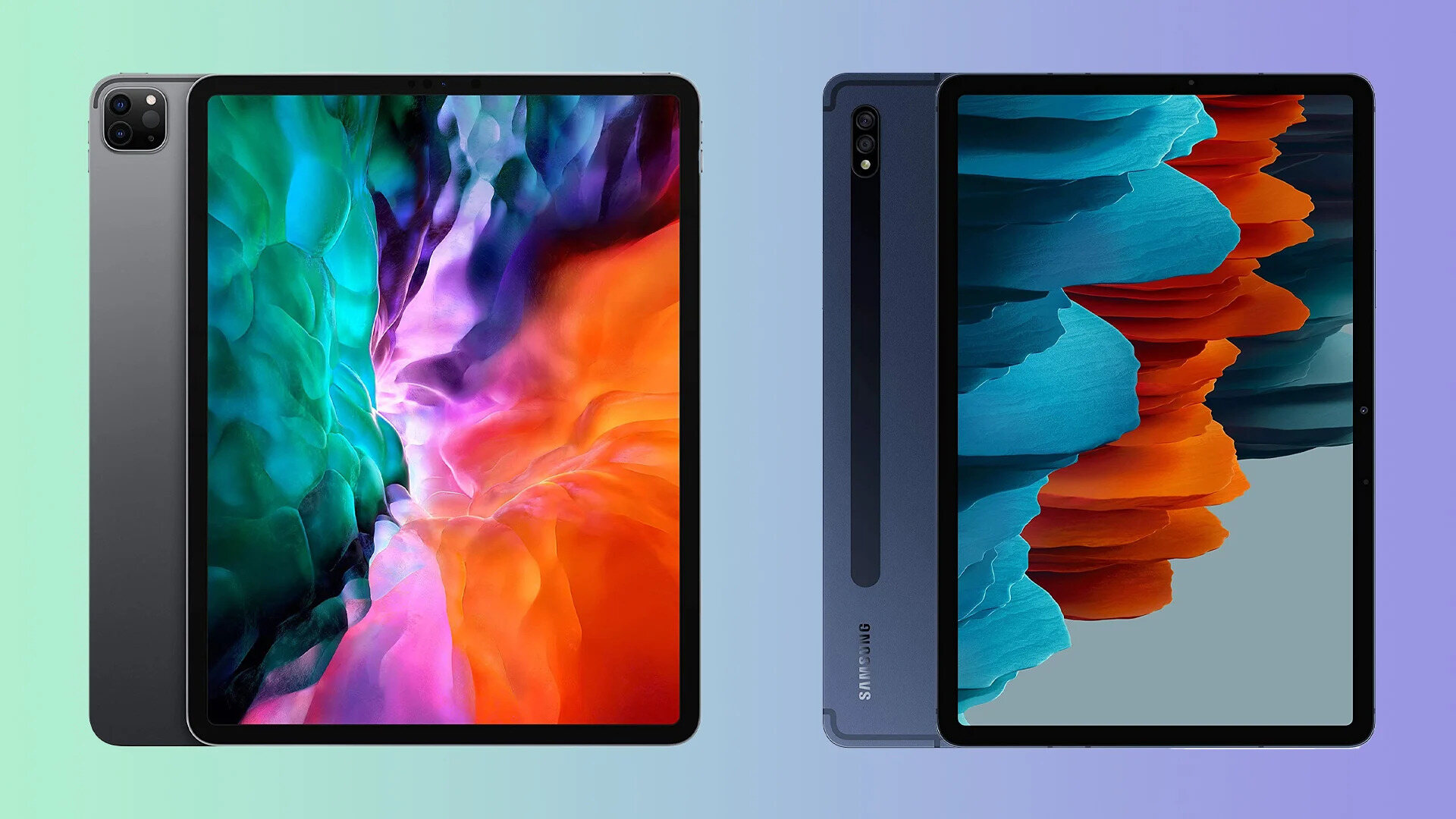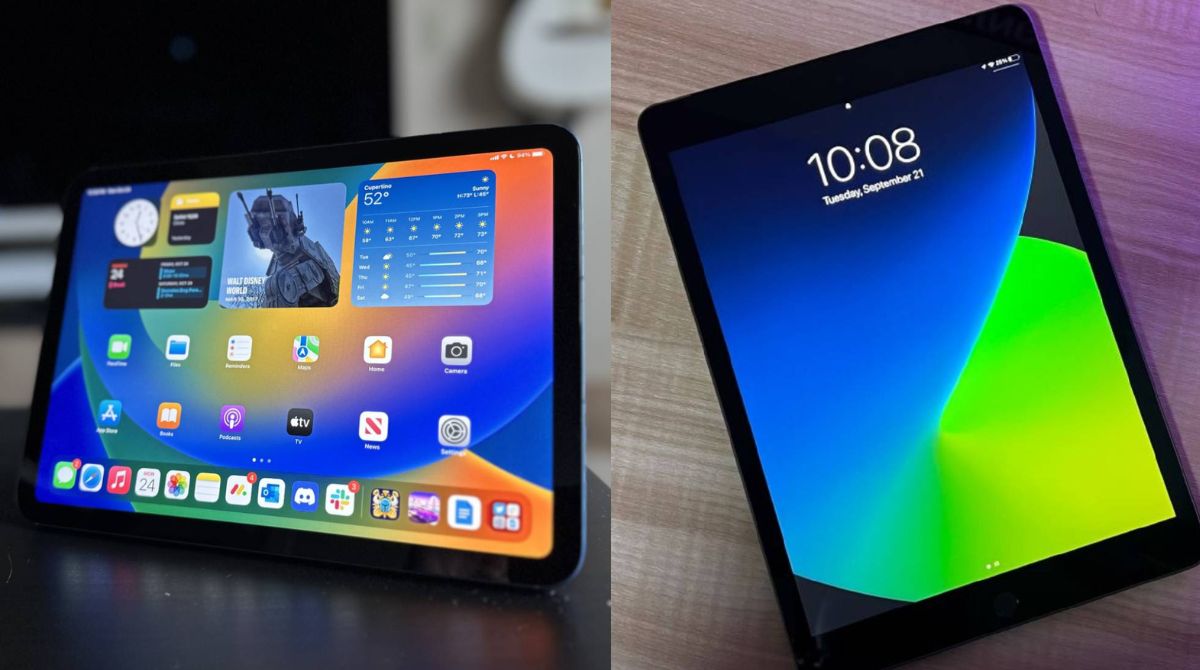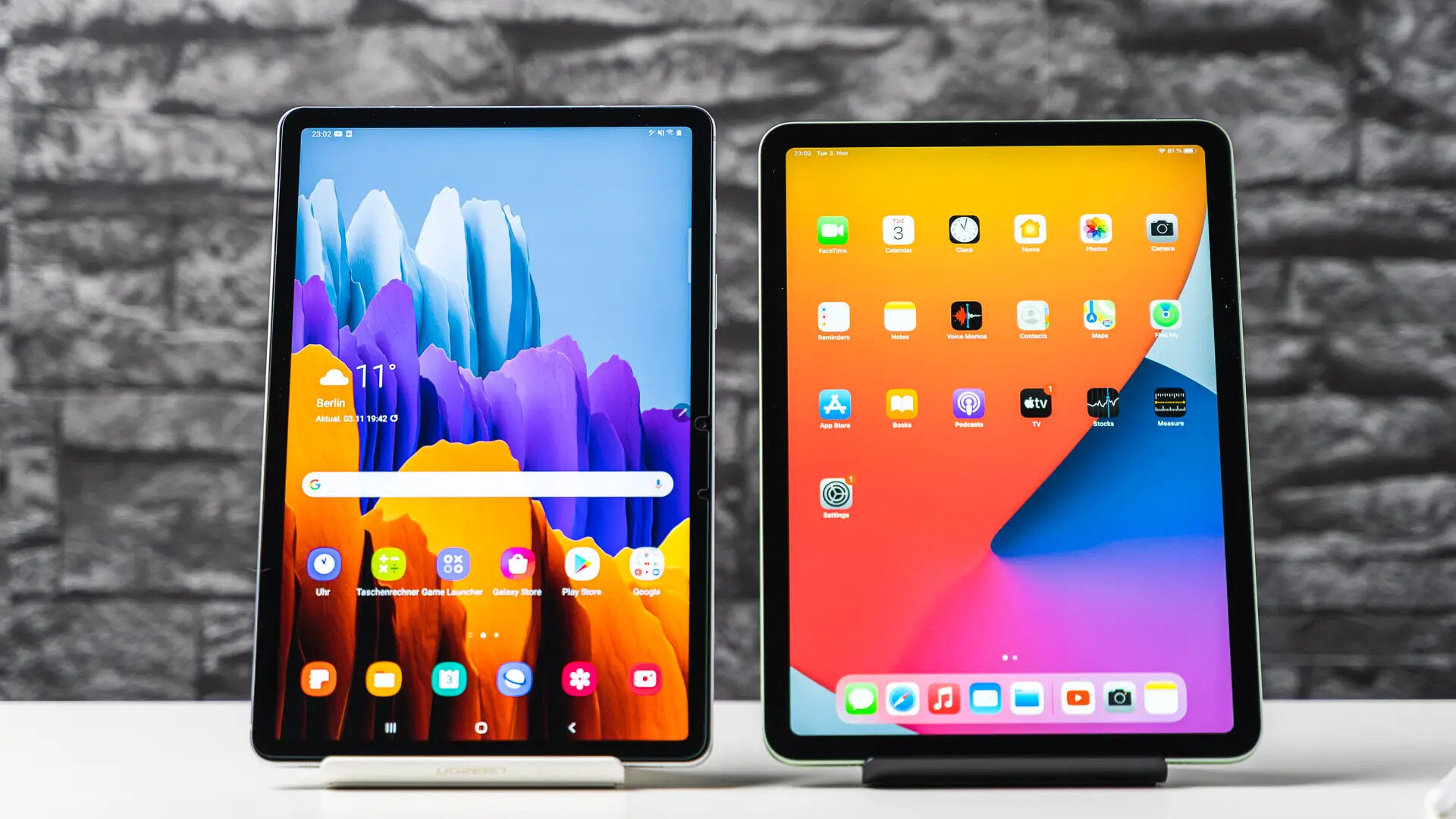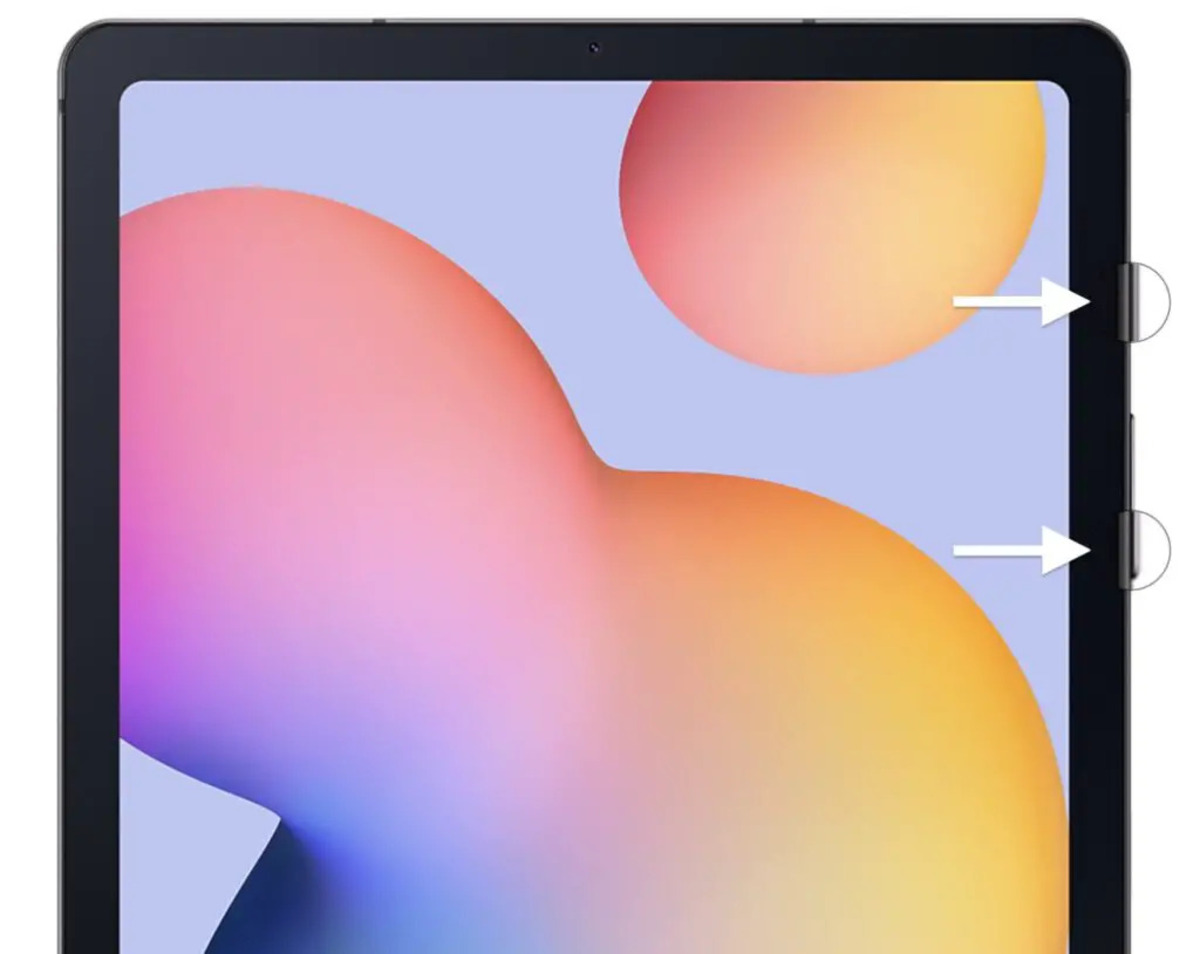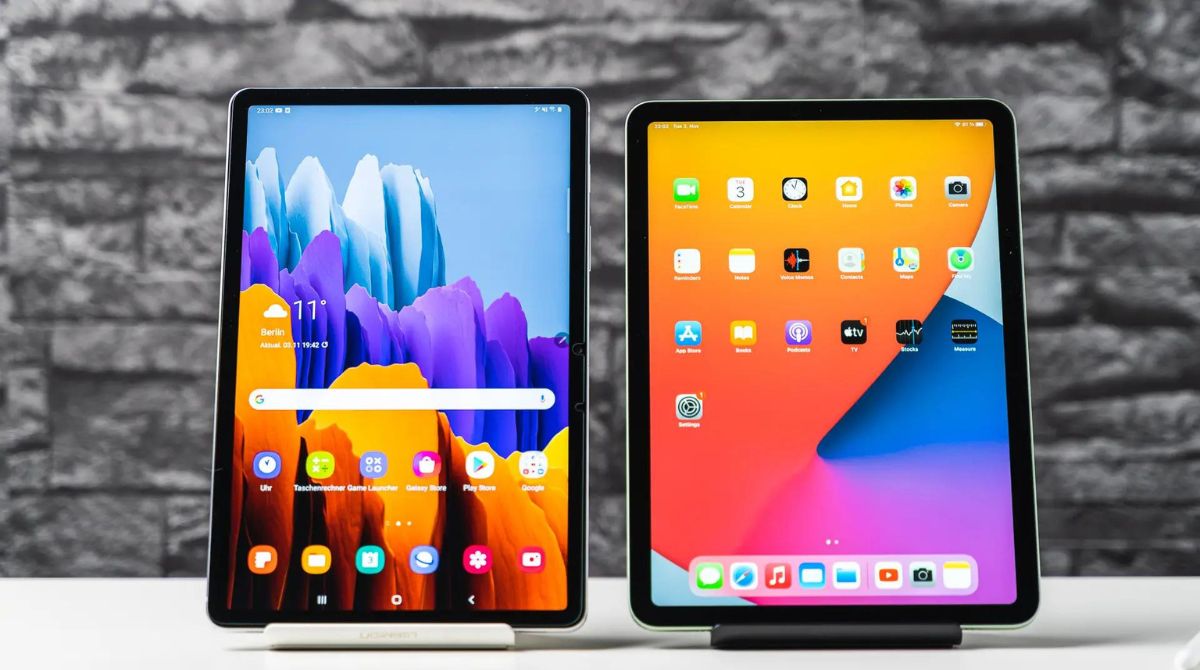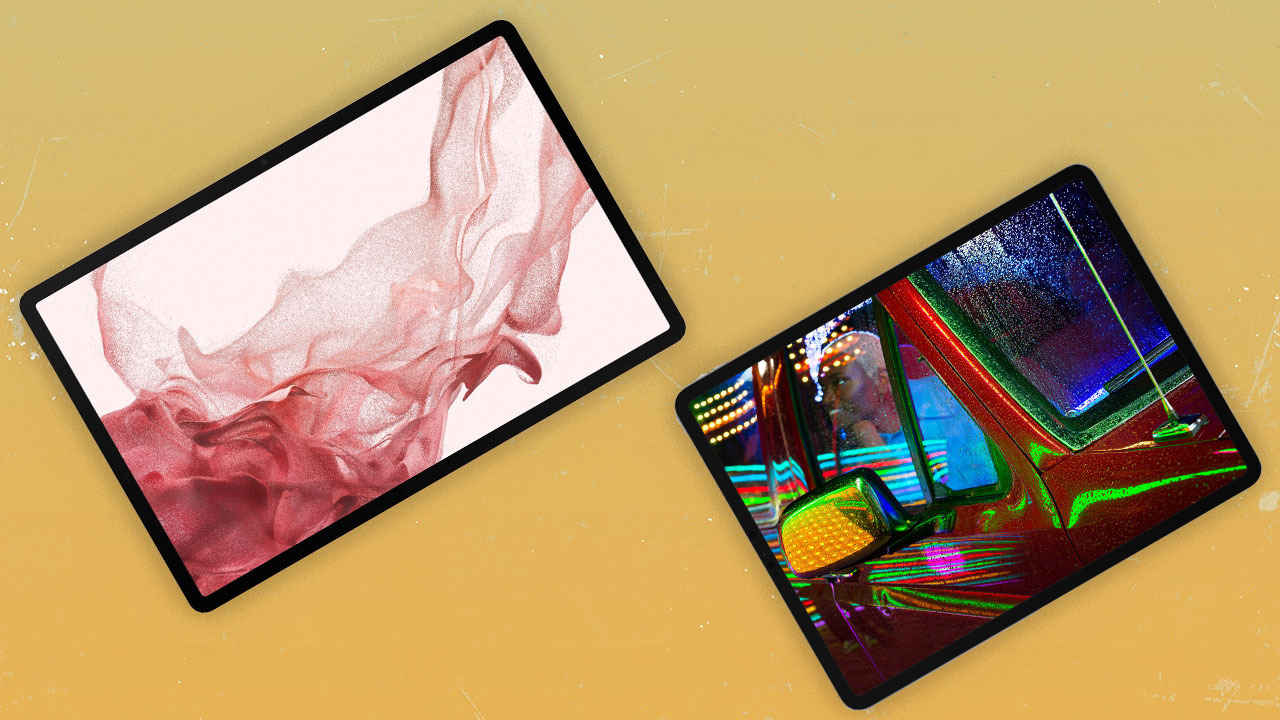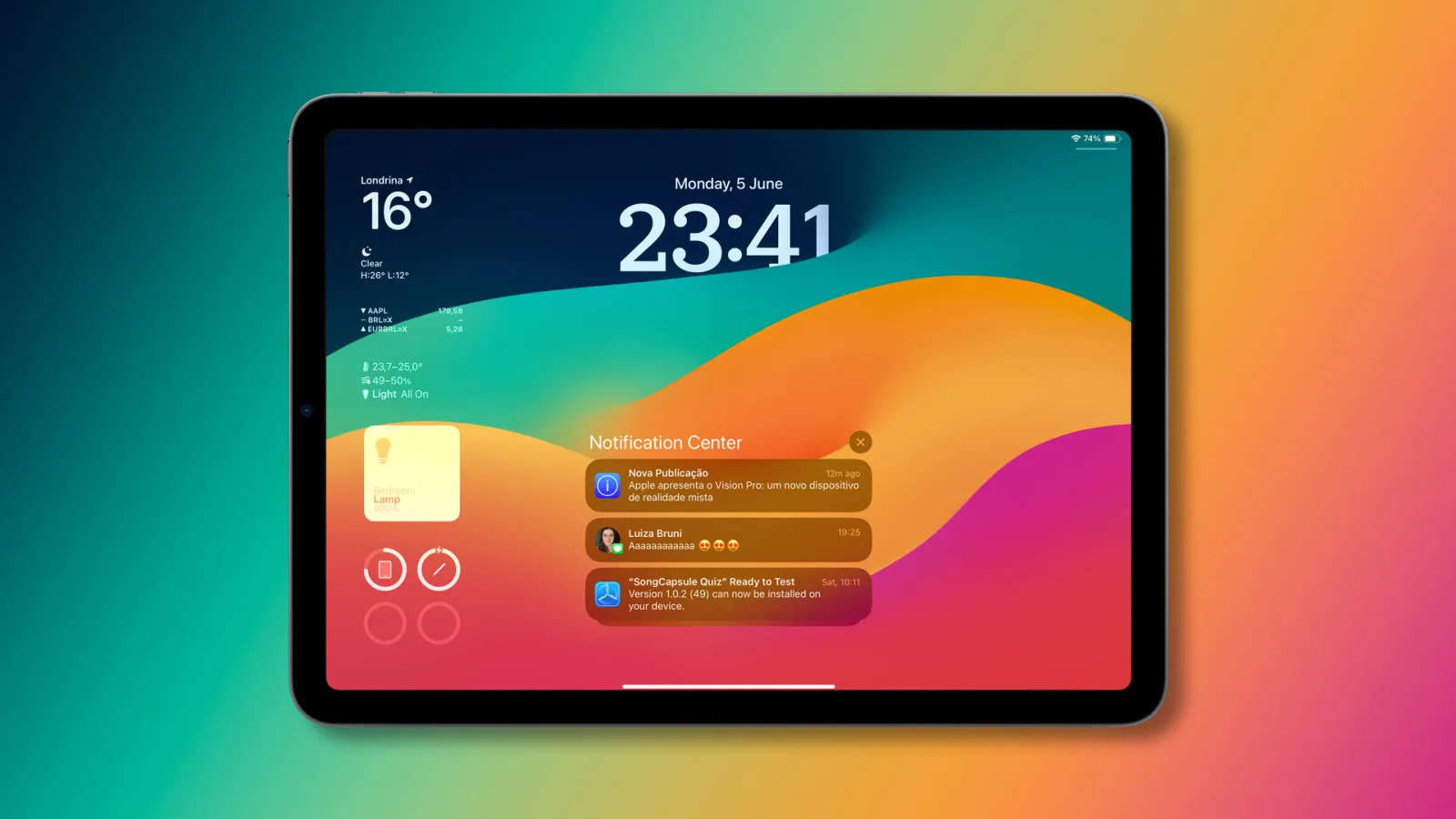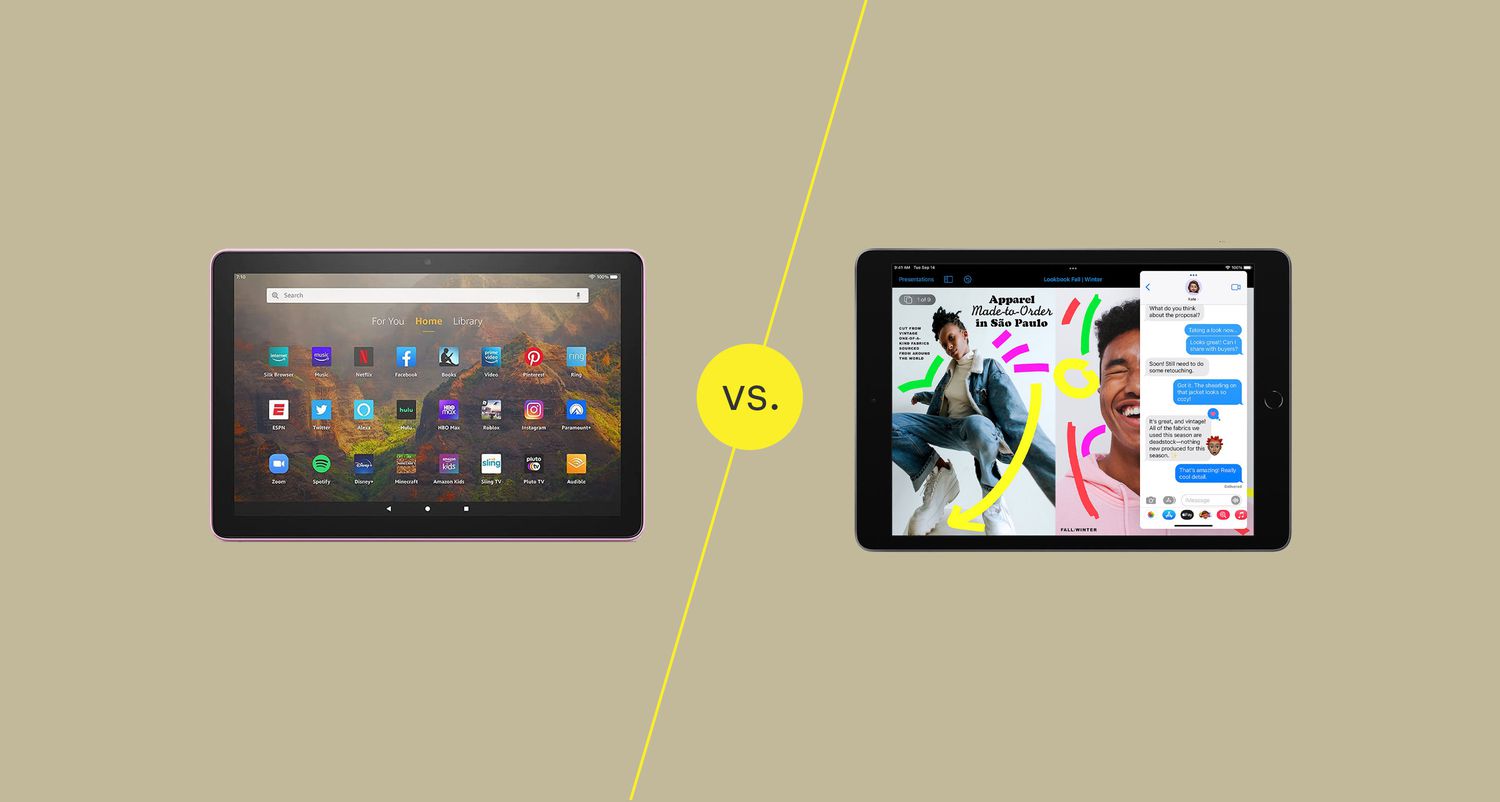Introduction
When it comes to portable computing devices, tablets and iPads have become incredibly popular choices for consumers. Their sleek designs, versatility, and functionality make them ideal for various tasks, including web browsing, multimedia consumption, and productivity. However, one common question that often arises is: Which is better – a tablet or an iPad?
While tablets and iPads may seem similar at first glance, there are some key differences between the two that can impact your decision. In this article, we will compare tablets and iPads across various aspects, including price, operating system, apps, portability, display, performance, battery life, storage, connectivity, and camera. By understanding these differences, you can make an informed choice that best suits your needs and preferences.
Before diving into the details, it’s important to clarify the terminology. While all iPads are tablets, not all tablets are iPads. The term “tablet” refers to a general category of portable devices that run on various operating systems, such as Android or Windows. On the other hand, “iPad” specifically refers to Apple’s line of tablets running the iOS operating system.
Now, let’s explore the key factors to consider when choosing between a tablet and an iPad.
Price
One of the factors that significantly influence the decision between a tablet and an iPad is the price. Generally, tablets offer a more diverse range of options and price points compared to iPads.
Tablets running on the Android or Windows operating systems tend to be more budget-friendly compared to iPads. These tablets come in various price ranges, allowing users to choose based on their budget and requirements. They offer a broader selection of affordable options, making them accessible to a wider audience.
On the other hand, iPads are known for their premium pricing. As Apple devices, they command a higher price due to the brand’s reputation, quality, and ecosystem. While this means that iPads have a higher upfront cost, they often retain their value well over time, which can be appealing for those considering resale or trade-in options.
It’s worth noting that both tablets and iPads have different models with varying specifications and prices. The cost can increase significantly depending on factors such as storage capacity, cellular connectivity, and additional features like support for the Apple Pencil or Smart Keyboard.
Overall, if you have a limited budget, a tablet may be the more affordable option. However, if you prioritize the Apple ecosystem, high-quality build, and have room in your budget, an iPad could be a worthwhile investment.
Operating System
The operating system is a crucial aspect to consider when comparing tablets and iPads. Tablets typically run on either the Android or Windows operating systems, while iPads exclusively use Apple’s iOS.
Android is an open-source operating system developed by Google. It offers a high level of customization and a wide range of hardware options from multiple manufacturers. This flexibility allows users to personalize their device’s look and feel, as well as access a variety of apps from the Google Play Store.
Windows, developed by Microsoft, provides a more traditional desktop-like experience on tablets. It offers compatibility with a wide range of software and applications, making it a suitable choice for those who rely heavily on Microsoft Office or other productivity tools.
On the other hand, iPads use Apple’s iOS, known for its user-friendly interface and seamless integration with other Apple devices. The iOS ecosystem is highly curated, ensuring consistent quality across apps and providing access to exclusive features like Siri, iCloud, and Apple Pencil support.
One advantage of iOS is its frequent software updates, which often bring new features and security improvements to older devices. This ensures that even older iPads can stay up-to-date and receive the latest enhancements.
Ultimately, the choice of operating system depends on your personal preferences and specific needs. If you desire customization and a wide range of hardware options, Android or Windows may be more suitable. However, if you value a cohesive ecosystem and seamless integration with other Apple devices, an iPad with iOS would be the preferred choice.
Apps
When it comes to apps, both tablets and iPads offer a wide range of options, but there are some differences to consider.
Android tablets have access to the Google Play Store, which boasts a vast selection of apps. From productivity tools to gaming, entertainment, and social media, you can find apps to suit your every need. Additionally, the open nature of the Android platform allows for third-party app stores and easier sideloading of apps, giving users more freedom and flexibility in app selection.
Windows tablets provide access to the Microsoft Store, where you can find a variety of apps optimized for the Windows platform. While the selection might not be as extensive as Android or iOS, you’ll still find popular productivity apps, multimedia tools, and games that run smoothly on a Windows device.
iPads, however, excel in terms of app selection and optimization. The App Store offers a vast collection of high-quality apps specifically designed for iPads. Whether you’re looking for professional-grade productivity apps, creative tools, or top-notch games, the App Store is known for its curated selection that takes full advantage of the iPad’s capabilities. Additionally, many developers prioritize iOS when developing new apps or features, giving iPad users early access to cutting-edge software.
Furthermore, iPads have the advantage of exclusive apps like GarageBand, iMovie, and Procreate, which are often lauded for their user-friendly interfaces and powerful features. These exclusive apps can provide a unique and seamless experience for creative professionals or hobbyists.
While both tablets and iPads offer a wide array of apps, iPads generally have a stronger selection, especially when it comes to tablet-optimized or exclusive apps. If having access to a diverse and high-quality app ecosystem is important to you, an iPad might be the better choice.
Portability
Portability is a key factor to consider when choosing between a tablet and an iPad. Both devices are designed with mobility in mind, but there are some differences in terms of size, weight, and form factor.
Tablets come in various sizes, typically ranging from 7 to 10 inches. This compact form factor makes tablets highly portable and easy to hold with one hand. They are lightweight and slim, making them perfect for on-the-go use. Tablets can easily fit into a bag or even a large pocket, allowing you to carry them wherever you need to go.
iPads, while also portable, generally have larger screen sizes compared to most tablets. The standard iPad models range from 9.7 to 10.9 inches, offering a more immersive viewing experience. However, the larger screen size also means that iPads are slightly heavier and bulkier than most tablets.
However, Apple has introduced the iPad Mini, which offers a more compact size while retaining the power and functionality of its larger counterparts. The iPad Mini is ideal for those seeking a highly portable device that can easily be held with one hand or slipped into a small bag or purse.
In terms of build quality and design, both tablets and iPads offer sleek and premium aesthetics. However, iPads have a reputation for their high-quality construction and attention to detail, often featuring premium materials like aluminum. This gives the iPad a more premium feel in hand and may be more attractive to those who value aesthetics.
Ultimately, the choice between a tablet and an iPad in terms of portability depends on your preferences. If you prioritize ultra-portability and lightweight design, a tablet might be the best option. However, if you favor a larger, more immersive screen and are willing to sacrifice a bit of portability, an iPad, especially the iPad Mini, could be the ideal choice.
Display
The display is a crucial aspect to consider when comparing tablets and iPads, as it directly affects your visual experience while using the device.
Tablets have a wide range of display options, with different screen sizes, resolutions, and technologies. Most tablets offer LCD or IPS LCD displays, which provide good color accuracy and viewing angles. The screen sizes vary from 7 to 12 inches, allowing users to choose based on their preferences and usage requirements.
iPads, on the other hand, are known for their high-quality Retina displays. These displays offer exceptional brightness, vibrant colors, and excellent pixel density, resulting in sharp and detailed visuals. The precise color calibration and True Tone technology on some models further enhance the viewing experience by adapting to ambient lighting conditions, providing a more natural look to the screen.
iPads also offer ProMotion technology on certain models, which provides a refresh rate of 120Hz for smoother scrolling and improved responsiveness. This is particularly beneficial for tasks that involve fast-moving content, such as gaming or video playback.
Furthermore, iPads generally have a more immersive aspect ratio, offering a wide canvas for multitasking and content consumption. This aspect ratio, combined with the larger screen size options, makes iPads particularly appealing for activities like photo editing, video watching, and creative work.
In terms of display quality, iPads, especially newer models like the iPad Pro, often outshine most tablets in terms of color accuracy, brightness, and overall visual experience. However, it’s worth noting that there are high-end tablets available that offer impressive displays, so it ultimately comes down to the specific model and your personal preferences.
Whether you prioritize a crisp and vibrant display or are satisfied with a decent screen for everyday use, taking the time to compare the display specifications and technologies can help you make an informed decision.
Performance
The performance of a device plays a significant role in determining how efficiently it can handle various tasks. Both tablets and iPads offer different levels of performance.
Tablets running on the Android or Windows operating systems come in various hardware configurations. Budget-friendly tablets generally have lower-end processors and less RAM, which might result in slower performance when it comes to multitasking or running resource-intensive apps.
However, higher-end tablets can provide smooth performance, especially those equipped with powerful processors and ample RAM. These tablets can handle demanding tasks like gaming, video editing, and multitasking with ease.
iPads, on the other hand, are known for their impressive performance. Apple designs their own processors, such as the A-series chips, which are optimized to work seamlessly with iOS. This tight integration between hardware and software results in a swift and responsive user experience.
iPads, especially the latest models like the iPad Pro, offer powerful processors and ample RAM, allowing for seamless multitasking, fast app launch times, and smooth performance even with demanding applications and graphics-intensive games.
Moreover, iOS is known for its efficient resource management, ensuring that the device maintains performance even with prolonged usage. The powerful processors and optimized software of iPads make them an attractive choice for users who require high-performance devices for tasks like photo editing, video rendering, and professional productivity.
While tablets can offer satisfactory performance depending on the specific model and configuration, iPads generally provide a higher level of performance across the board, ensuring a smooth and responsive user experience.
Battery Life
Battery life is a crucial consideration when choosing a portable device, as it determines how long you can use it before needing to recharge. Both tablets and iPads offer different battery life capabilities.
Tablets can vary in terms of battery life depending on factors such as screen size, resolution, processor efficiency, and software optimization. Generally, tablets offer decent battery life, ranging from around 7 to 12 hours of continuous use.
Windows tablets may have slightly lower battery life compared to Android tablets, primarily because Windows tends to be a more resource-intensive operating system.
iPads, on the other hand, are known for their exceptional battery life. Apple has carefully optimized both hardware and software to ensure efficient power management. This optimization, combined with the use of high-capacity batteries, allows iPads to offer all-day battery life, lasting up to 10 hours or more on a single charge.
The actual battery life you will experience on an iPad can vary depending on factors such as screen brightness, usage intensity, and running apps. Nevertheless, iPads generally provide longer battery life compared to most tablets, making them ideal for travel, working on the go, or extended periods of use without access to a power source.
It’s important to note that battery life can also vary between different iPad models. For instance, the iPad Pro models, with their more powerful processors and larger screens, may have slightly shorter battery life compared to the standard iPad or iPad Mini models.
If long-lasting battery life is a priority for you, an iPad might be the better choice. However, it’s always a good idea to check the battery life specifications of specific models and consider your usage patterns to determine which device will best suit your needs.
Storage
The amount of storage available on a device is an important consideration, as it determines how much data, apps, and media you can store locally on the device. Both tablets and iPads offer different storage options.
Many tablets, especially Android ones, offer expandable storage options through microSD cards. This allows users to easily increase the storage capacity by adding a memory card, providing flexibility and cost-effectiveness.
iPads, however, do not have expandable storage options. The storage capacity is fixed and determined by the specific model you choose, ranging from a lower starting capacity to higher options. It’s worth noting that the higher the storage capacity on an iPad, the higher the cost.
While the inability to expand storage on iPads may seem like a limitation, Apple offers cloud storage solutions through iCloud, allowing you to store your files and media in the cloud and access them across multiple devices. This can help alleviate any storage constraints on the iPad.
When considering storage, it’s important to think about your usage patterns and storage needs. If you have a large media library or require ample storage for apps and files, a tablet with expandable storage may be more suitable.
However, if you prioritize the convenience and simplicity of an integrated storage system, an iPad with sufficient built-in storage or supplemented by iCloud storage could be a viable option.
It’s worth noting that both tablets and iPads offer cloud storage options, such as Google Drive for Android tablets and iCloud for iPads, which allow you to back up and sync your files across devices, providing an additional layer of convenience and data security.
Ultimately, the choice between a tablet and an iPad in terms of storage depends on your individual needs and preferences. Assessing your storage requirements and considering the options available can help you make the right decision.
Connectivity
Connectivity options are an important consideration when comparing tablets and iPads, as they determine how you can connect to networks, other devices, and the internet.
Both tablets and iPads offer various connectivity options, such as Wi-Fi and Bluetooth, which are essential for wireless connections. These allow you to connect to the internet, transfer files, and connect to other devices like wireless headphones, speakers, or keyboards.
Almost all tablets and iPads come with built-in Wi-Fi capabilities, allowing you to connect to Wi-Fi networks for internet access. Additionally, some models of tablets and iPads also offer cellular connectivity, allowing you to use a SIM card and connect to mobile networks for internet access on the go.
However, it’s worth noting that not all tablets have cellular connectivity options. Some tablets offer Wi-Fi-only models, which can be a limitation if you require internet access while away from Wi-Fi networks.
iPads, on the other hand, offer options for both Wi-Fi-only and cellular models. This flexibility allows you to choose the connectivity option that best suits your needs and preferences.
In terms of Bluetooth connectivity, tablets and iPads generally offer the ability to connect to a wide range of Bluetooth-enabled devices like speakers, headphones, keyboards, and mice. This allows for greater versatility and productivity, as you can connect and use peripherals wirelessly.
It’s important to consider your specific needs when it comes to connectivity. If you require constant internet access while on the move, a tablet with cellular capabilities may be more appropriate.
However, if you primarily rely on Wi-Fi networks for internet access and only occasionally need mobile connectivity, a Wi-Fi-only tablet or iPad model will suffice.
Ultimately, the choice of connectivity options depends on your lifestyle, work requirements, and personal preferences. Consider your internet usage patterns and the need for wireless connections to determine which device best fits your needs.
Camera
The camera capabilities of a device can play a significant role for those who enjoy capturing photos and videos or engaging in video calls. Both tablets and iPads offer different camera options to consider.
Tablets vary in terms of camera quality and features. While most tablets have front and rear cameras, they generally prioritize functionality over exceptional image quality. The cameras on tablets are typically suitable for basic imaging needs, such as video calls or casual photos, but may not deliver the same level of detail, low-light performance, or advanced shooting features as dedicated smartphones or high-end cameras.
iPads, on the other hand, often offer higher-quality cameras compared to most tablets. They feature advanced image sensors, larger pixel sizes, and improved image processing capabilities. This results in sharper images, better low-light performance, and more vibrant colors.
Furthermore, iPads, especially the iPad Pro models, offer additional camera features like optical image stabilization, Smart HDR, and the ability to record 4K videos. These features make iPads more versatile for those who want to capture high-quality photos or shoot professional-grade videos on their tablet.
In addition to the rear-facing camera, iPads also have a front-facing camera, which is used for video calls and selfies. The front-facing cameras on iPads are generally enhanced compared to most tablets, allowing for clearer video calls and better-quality selfies.
It’s important to note that while iPads offer improved camera capabilities, they might not compete with the quality and versatility provided by dedicated digital cameras or the latest flagship smartphones.
Therefore, if camera quality and advanced photography features are important to you, an iPad may be a better choice. However, if you primarily use your device for casual snapshots and video calls, a tablet with standard camera capabilities may suffice.
Ultimately, it’s essential to consider your specific photography needs and expectations when evaluating the camera capabilities of tablets and iPads.
Conclusion
When deciding between a tablet and an iPad, there are several factors to consider. Each device has its own advantages and considerations, and the choice ultimately depends on your specific needs, preferences, and budget.
If you’re looking for a wide range of options at various price points, along with the flexibility of different operating systems, a tablet might be the right choice for you. Tablets running Android or Windows offer affordability, customization options, and access to a diverse selection of apps.
However, if you value a premium build quality, seamless integration with other Apple devices, and a refined user experience, an iPad may be the better option. iPads, running on Apple’s iOS, offer a curated app ecosystem, exceptional performance, longer battery life, and impressive camera capabilities.
Consider factors like portability, display quality, storage capacity, connectivity options, and camera capabilities when making your decision. Assess your usage patterns, requirements, and budget to determine which device will best suit your needs.
Remember, both tablets and iPads have their respective strengths and weaknesses. It’s important to weigh these factors against your personal preferences and priorities before making a final decision.
Ultimately, whether you choose a tablet or an iPad, both devices offer a range of features and functionalities that can enhance your mobile computing experience. Take your time, compare the features, and make a choice that aligns with your individual needs and preferences.







